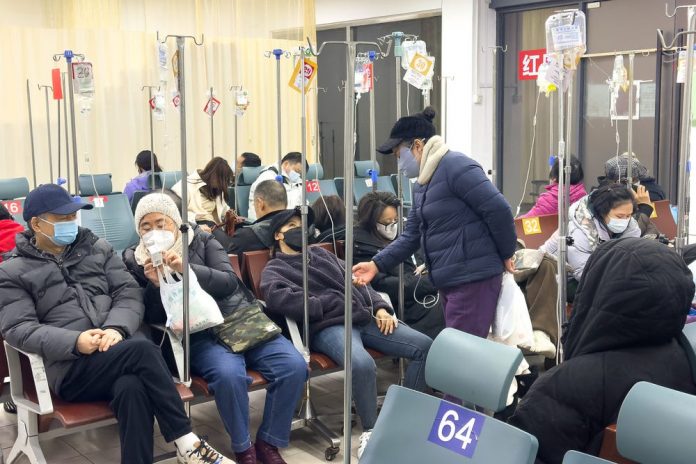Recent weeks have seen a rise in respiratory illnesses across China, prompting concerns among the public. Among these is human metapneumovirus (HMPV), a virus causing respiratory infections. While images of crowded hospitals and online discussions may evoke memories of the early COVID-19 pandemic, health experts emphasize that HMPV is not a new virus and does not pose the same threat.
Here’s what you need to know about HMPV, its symptoms, transmission, and how to stay protected.
What Is Human Metapneumovirus?
HMPV is a common virus that causes acute respiratory infections, especially during colder months. First identified in the Netherlands in 2001, it has likely been affecting humans for over 60 years. Unlike COVID-19, HMPV is well-understood, and most people develop some level of immunity after their first infection.
Although HMPV can infect individuals of all ages, it tends to cause more severe symptoms in young children, older adults, and those with weakened immune systems. Symptoms typically include:
Cough, fever, nasal congestion, and shortness of breath.
In severe cases, bronchiolitis or pneumonia, particularly in children under 5 and elderly individuals.
Most infections resolve on their own within 1–2 weeks, and there is no vaccine or specific antiviral treatment available yet.
How Does HMPV Spread?
HMPV spreads in much the same way as other respiratory viruses:
Droplet Transmission: Through coughing or sneezing.
Contact Transmission: By touching contaminated surfaces like doorknobs, phones, or toys and then touching your face.
The virus can survive on surfaces for hours, underscoring the importance of maintaining cleanliness.
Why HMPV Is Not Like COVID-19
HMPV differs significantly from COVID-19. Unlike the novel coronavirus that caused a global pandemic, HMPV has been around for decades, and its behaviour is well-documented.
Prior Immunity: Most individuals are exposed to HMPV in childhood, which helps mitigate severe reinfections.
Known Transmission and Effects: The virus does not spread as rapidly or unpredictably as COVID-19, and its symptoms are generally milder.
No Emergency Status: The World Health Organization (WHO) does not classify the current rise in HMPV cases as a global health emergency.
Virologists and immunologists, such as Jill Carr from Flinders University, emphasize that while high HMPV case numbers may strain hospital resources, the situation is fundamentally different from the initial threat of SARS-CoV-2.
Prevention Tips to Stay Healthy
The Chinese CDC and global health experts recommend taking these precautions to prevent HMPV infections:
Practice Good Hygiene: Wash your hands regularly with soap and water for at least 20 seconds.
Wear Masks: Especially in crowded or confined spaces.
Ensure Proper Ventilation: Keep indoor spaces well-ventilated.
Boost Immunity: Eat a balanced diet, exercise, and maintain a regular routine.
For those in high-risk groups—children, elderly individuals, and immunocompromised people—monitor symptoms closely and seek medical attention if severe issues, such as breathing difficulties or persistent high fever, occur.
The Bigger Picture
While HMPV cases are rising in China, respiratory infections tend to peak in winter, and this trend is not unique to HMPV. China’s health authorities have reported that they are actively monitoring the situation, with a focus on early detection and response to prevent further strain on healthcare systems.
Though concerning, the current increase in HMPV cases does not indicate a new pandemic. By understanding the virus, its transmission, and effective prevention methods, individuals can protect themselves and their families.
Related article: Keep up-to-date with the latest from Health and Welfare







